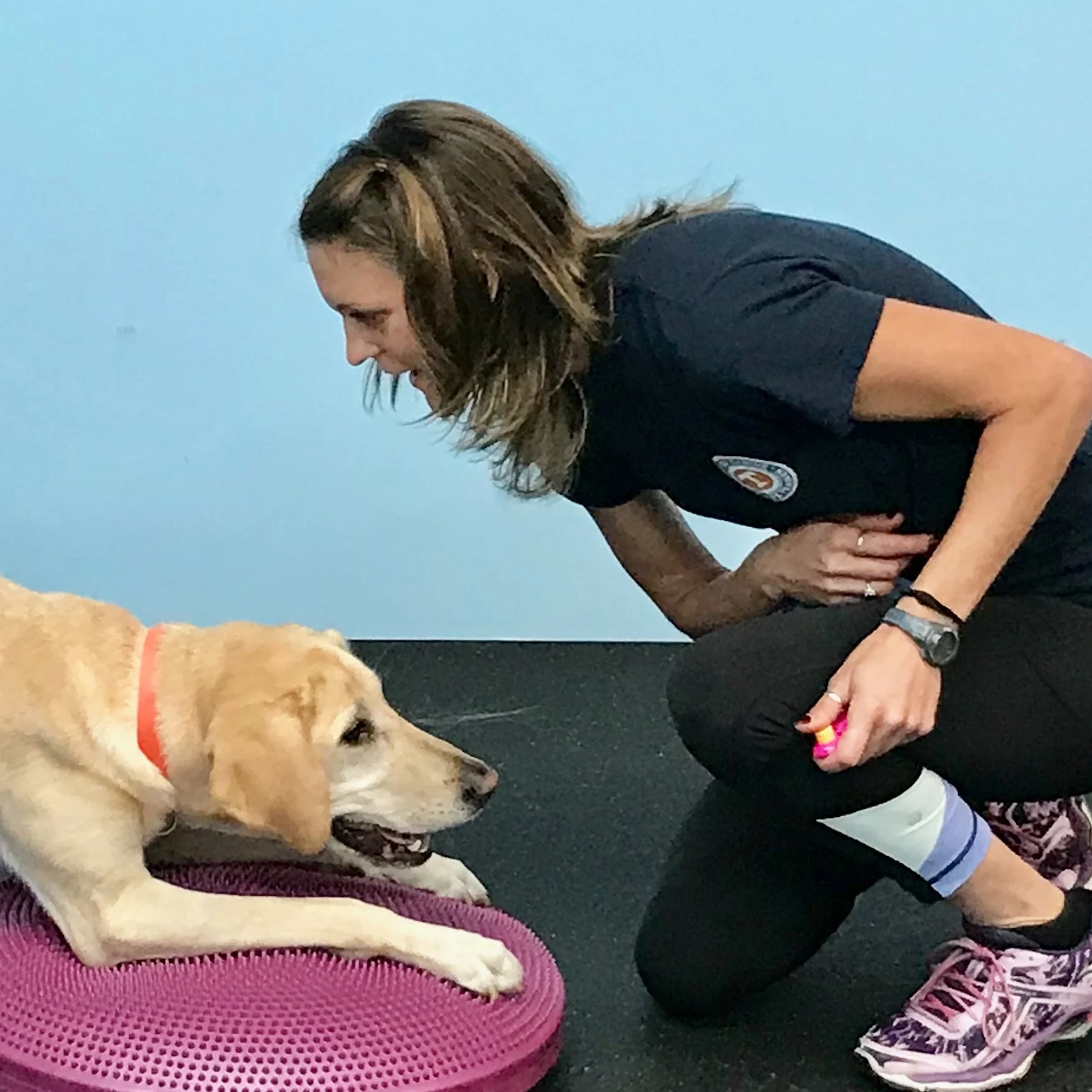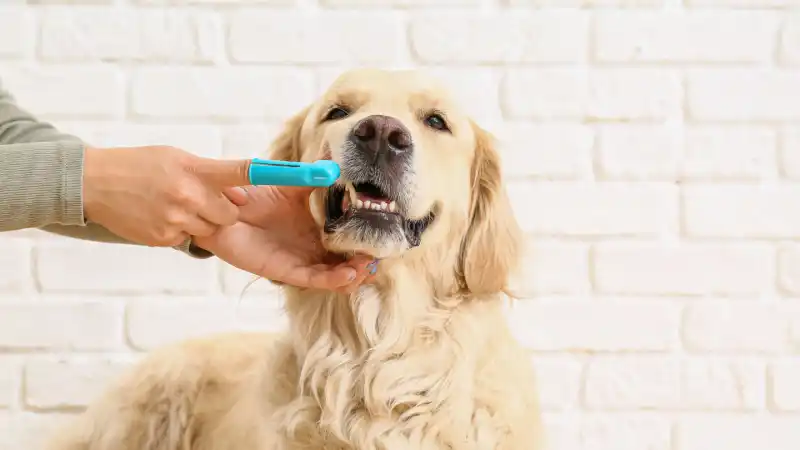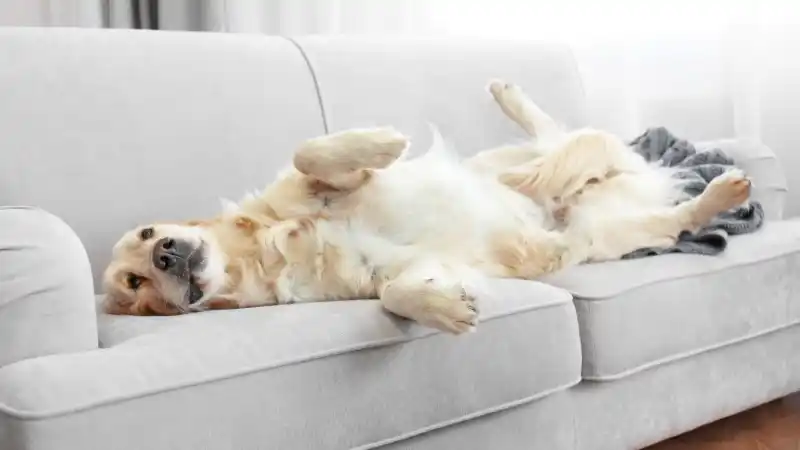7 Ways to Prevent Canine Injuries at Home
Keeping your dog safe and injury-free is the top priority of every pet owner, but do you know how to minimize the risk of canine injury around your home?

It’s gut-wrenching when your dog accidentally gets injured at home. Sometimes a lurch or non-graceful crash results in a frustrating medical mishap. After all, as humans dislike boring bedrest, dogs also generally dislike crate rest and the “cone of shame”! Take the below precautions to help reduce dog injuries in your home:
1. Restrict access to the stairs.
Ding-dong! After hearing the doorbell, your dog may enthusiastically barrel down the stairs. This dangerous dash with a grand finale leap may result in tripping, falling, or an unsafe landing. When your dog is upstairs, protect your pooch by baby-gating or otherwise barricading the top of the stairs. You could also close an upstairs door to keep your dog contained. Conversely, if you want to prevent your dog from wandering upstairs, put a baby-gate at the bottom of the stairs. If your dog struggles with calmly going down the stairs on a regular basis, you may consider carrying a smaller dog down the stairs or leashing a larger dog so that he strides more gracefully down the steps.
2. Assist with vehicle and furniture exits.
A carefree plunge out of a vehicle could result in an unsteady or impactful landing. Avoid unneeded impact on your dog’s shoulders, wrists, elbows, knees, and spine by lifting your dog in and out of the car. You can also reduce jolting by lifting your pup onto and off of furniture. If your dog is too big for human guidance, consider a ramp, ottoman, or portable pet stairs to provide a safer option for elevation changes. If you need some help with general manners and impulse control for car exits and furniture use, check out our previous blogs!
3. Provide traction on hard floors, stairs, and bathtubs.
Have you noticed your dog running like a cartoon animal – legs moving frantically but hardly making any progress – or sliding across slick floors? Perhaps you have beautiful hardwood or tile stairs and your dog must be extra cautious on those polished steps. Other common areas for a loss of balance would be glossy floors near exits and entrances and in the bathtub. First, consider making everyday life more traction-friendly by using texturized spray for hard floors, texture tape or carpet stick-ems for stairs, yoga mats, area rugs with double sided tape or rubber backing, and non-slip bathmats. Such enhancements could prevent a sprawl - sometimes a topple results in a soft tissue injury or misaligns the spine. Second, hairy feet on glossy floors may make floors even harder to navigate. Talk to your groomer or breeder to determine if and how you should trim furry paw hair.
4. Warmup and cool down your dog before and after physical activity.
This includes warming your dog up before he goes from “gear 1” to “gear 100” to play a happy game of fetch, take a beautiful hike, engage in a dog sport, or do a canine fitness session. After the fun, be sure to cool down your dog, too. Read this blog for tips on how to do a proper warm up and cool down.
5. Train your dog to accept nail trimming.
Having too long of nails will actually impact how your dog places his feet on the ground and his ability to maintain balance properly. Thus, a sleek floor is harder to maneuver with over-grown nails. Further, if your dog is playing on an area rug or carpet, a long nail may snag the rug or get caught in a carpet thread. Having a toe caught might be very scary to your pup – some pups respond by overcorrecting and jerking the limb away from the “trap.” This can result in a soft tissue, toe, or nail injury. To prevent these snags, be pro-active and train your dog to accept nail trimming. Having a dog well-accustomated to nail trimming usually also reduces the risk that you will cut the quick due to a wiggly paw in a nail trim session. Check out this two-part blog about desensitizing your dog to nail trimming.
6. Remove hanging tags during dog-dog wrestling sessions.
If your dog is having a superb time wrestling with another pooch, you may want to remove his collar with jangly tags during the play session. Sometimes tags or the keyrings that attach the tags to the collar get caught between the other dog’s teeth. Getting stuck together creates panic and could be painful. Keeping identification on your dog is very important – during play sessions, you could use a flat tag on a collar or a collar with embroidered phone number information. Also, be sure that your dog’s microchip number is up to date with AKC Reunite and get a chip if you do not have one already.
7. Scan your yard, driveway, and sidewalk for hazards.
First, beware of slip hazards. Some dogs get hurt running out the back door onto wet grass or trying to turn during fetch on a dewy morning! If surfaces are glistening, consider waiting for a drier time of day to let your dog run. Second, ice and snow often look like a fun, majestic surface on which to play with your pup. Instead, these cold, choppy surfaces sometimes create abrasions on your precious pooch’s paws and can be slippery.
Creating a dog-friendly yardcan help reduce the odds of your pet getting hurt. Beware of any chemicals that you, landscapers, or neighbors may have used. Fertilizers, de-icing agents and salt may be harmful to sensitive paws or if ingested. Dogs sometimes ingest these by licking them off of their paws! Scan for other hazards such as debris, litter, or mushrooms that may have suddenly appeared in your yard. Remove those perils as needed.
Let Pet Insurance Help!
Blunders and stumbles can occur even when you’re careful. Part of being prepared for such misfortune can include purchasing pet insurance. Pet insurance can help provide coverage for accidents and illnesses, as well as routine care. Check out AKC dog insurance plans to see what might be the best fit for your family.

Every Dog and Cat Deserves the Pet Insurance of Champions
Get prize-winning care for your pets.

Jasey Day holds the Certified Canine Fitness Trainer (CCFT) credential through the University of Tennessee. She is a member of the Bobbie Lyons K9FITteam - a team of compassionate canine fitness instructors who actively teach others and continually expand their own knowledge. Since 2004, Jasey has taught a variety of workshops and classes on the following: Puppy, Canine Good Citizen/Family Pet, Advanced Family Pet, Canine Fitness, Canine Swimming, Rally, and Agility. In addition, Jasey has earned over 60 titles in Dock Diving, Agility, Rally, CGC and Trick Dog. Jasey has worked full time for the American Kennel Club since 2007 and teaches at Care First Animal Hospital in Raleigh, NC. Jasey’s Labrador Retrievers spend their free time hiking, training, and snuggling with Jasey.
READ MORE ARTICLES

